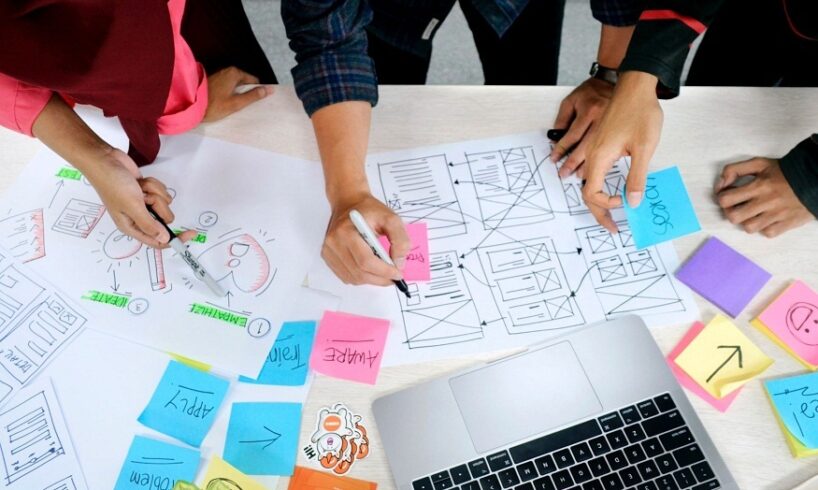
The user interface is what users interact on-screen, which can be defined through document space, menus, dialog boxes, icons, images, animations, and more. Every business that has a digital presence must be aware of what interface development is. It is a significant factor to improve the engagement on your website or an application.
Many people get confused between the user interface and user experience. Both are different concepts, covering a unique set of development skills. The user interface is a part of the user experience that goes beyond the user’s visibility, including start-up time, latency, error handling, automated tasks, and more.
In simpler words, the interface means the on-screen information that goes perfectly for websites, mobile applications, information stationary screens, presentation panels, and more. The complete development process includes a few important steps. Here, you will learn about them.
Stages of interface development:
- Research
- Use cases
- Interface structure
- Interface prototyping
- Stylistics
- Design concept
- Screens designs
- Interface animation
- Preparation of materials for developers
Research:
Research is the first and most crucial aspect of the entire journey. Developers collect information about the product, the competitors, customers, statistics of the current user interface, and the intended target audience. Research gives a clear understanding of the target audience who uses the interface.
Use cases:
It involves a list of tasks that users will accomplish in an interface. The common tasks are – go to the website, log in, go to profile, and more. The task varies depending on the purpose of applications or websites. So, the use case is another important step that needs the attention of developers.
Interface structure:
Interface structure is made after gathering all details of the previous steps. A developer will decide the number of screens, their positions, and overall structure.
Interface prototyping:
When it comes to prototyping, developers get engaged with the draft and final process of prototyping. However, small websites and mobile applications do not require this step. Draft prototyping presents the schematic image of all screens. Developers present the design in zones with all needed descriptions. Through draft prototype, it helps developers understand how big the website size will be and how much information the website needs.
The final prototype is the next step where page layouts are defined along with buttons, texts, forms, checkboxes, and other elements.
Defining the stylistics:
Defining the future interface stylistics needs several sets of images. Developers concentrate more on website pages, illustrations, buttons, font compositions, and more. All these forms the basic concept of designing. An interface development includes all these details, and it is a broad concept that makes any application and website attractive to users.
Design concept:
It shows how the website will look in the future. The design concept can be made in any size. It basically represents the screens with interface content. For example, if it is a website, then developers check the appearance of the same page on different devices.
Design of all screens:
When the design concept gets approved, developers proceed to the next step of designing all screens. It defines how the entire interface will be. This step also needs the finalizing process where the font size or interlacing will be checked. Developers verify every detail to ensure that the design does not make any conflict.
Interface animation:
Interface animation makes the deigning even clearer, and it is needed throughout the designing process. It is an important step to help clients understand the website and guides developers in their design.
Interface developing materials:
The earlier steps help a developer prepare interface for websites or applications. Prototyping makes the design choices very clear. With the animation, a developer understands how he/she implements the objects. The other important materials are sprites, fonts with icons, UI kit, and more.
Why do you need a front-end developer?
An interface developer translates software designing concepts into reality with the help of front-end technology. Developers come up with the best solutions to make a website appealing to users. Developers prioritize users’ intent and a business’s requirement while developing, which may go beyond the technology limitations.
Developers in the field need to possess a few good qualities which make them more proficient. Some skills are really needed to build a great interface design, including problem-solving skills, analytical skills, and communication skills.
The responsibilities of a developer:
A developer in this field carries on an array of tasks that are essential to make the design interactive. He/she performs a huge responsibility, including:
- Analyzing product requirements and UI specifications.
- Planning custom-side codes in a multi-tiered atmosphere to support software engineers.
- Developing an interface pattern library.
- Leading front-end interface development.
- Developing prototypes, Use cases, and functional specifications.
Emissary introduces a unique approach for solving different, complex business processes through software solutions. Using Artificial Intelligence (AI) and Machine Learning (MI), the company has garnered a reputation for analyzing data that helps in reducing business risks at a great level. The experienced team of developers innovates approaches that help a business grow rapidly.
